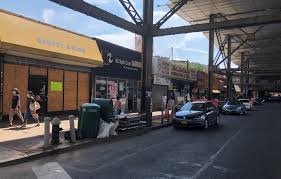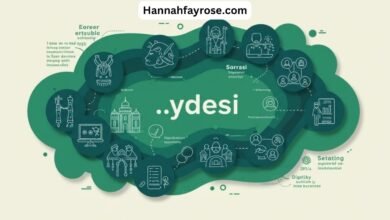Newcologia Roosevelt Avenue Queens New York: A Progressive Hub of Science, Health, and Community in Queens
Newcologia Roosevelt Avenue Queens New York: A Progressive Hub of Science, Health, and Community in Queens

Introduction
Nestled along one of Queens’ most dynamic thoroughfares, Newcologia Roosevelt Avenue Queens New York is emerging as a standout institution weaving together advanced biomedical research, accessible healthcare services, and grassroots urban improvement. This article provides an updated, detailed look at Newcologia’s mission, its role in the community, the innovations underway, and how it continues to evolve to meet the needs of Roosevelt Avenue residents and beyond.
The Genesis of Newcologia Roosevelt Avenue Queens New York
Vision and Founding Principles
The idea that led to Newcologia Roosevelt Avenue Queens New York was born from the recognition that scientific and medical advances often never reach underserved communities equitably.
Strategic Choice of Roosevelt Avenue
Roosevelt Avenue offers a unique mix of high foot traffic, cultural diversity, and infrastructure. These factors made it an ideal location for Newcologia. Being situated centrally in Queens means easy access for patients, students, collaborators, and residents. Public transportation hubs, multilingual communities, and neighbourhoods reflecting a broad socioeconomic spectrum all contribute to its relevance.
Core Functions and Offerings
Biomedical Research and Clinical Trials
At its heart, Newcologia Roosevelt Avenue Queens New York runs a number of cutting‐edge research programmes. These include projects in molecular diagnostics, identification of novel biomarkers for chronic diseases, personalized treatment protocols, and epidemiological studies focusing on conditions disproportionately affecting Queens communities.
Community Healthcare Services
It operates outreach clinics, preventive health screenings, and health education workshops. Major programs focus on diabetes, cardiovascular wellness, mental health screenings, and vaccination drives. By operating within the Roosevelt Avenue corridor, Newcologia removes many transportation or language barriers that often prevent residents from accessing care.
Education and Workforce Development
. Partnerships with local colleges and high schools involve internships, fellowships, and training programs in lab techniques, bioinformatics, and public health research.
Impact on Roosevelt Avenue and Queens
Improving Public Health Metrics
. More residents are getting screenings for hypertension, diabetes, and mental health, and there is greater community awareness of risk factors. This has lowered emergency room visits for manageable conditions.
Economic and Social Revitalization
Newcologia’s activities generate jobs: research assistants, lab technicians, administrative staff, outreach workers.
Environmental and Urban Design Contributions
Sustainability features are woven into Newcologia’s facilities: solar panels, energy-efficient labs, water recycling, and green roofs. Public spaces around the campus are being transformed into mini parks, seating areas, and gardens. These changes help reduce heat island effects and improve air quality, contributing to the wellness of residents near Roosevelt Avenue and beyond.
Challenges and How Newcologia Roosevelt Avenue Queens New York Addresses Them
Funding and Research Costs
Biomedical research is expensive—equipment, regulatory compliance, specialised staffing all cost. Newcologia relies on a mixed funding model: grants from federal and state agencies, philanthropic donors, partnerships with universities, and revenue-sharing arrangements. It also seeks commercialising some innovations (e.g., diagnostic tools) to reinvest in its infrastructure.
Cultural, Language and Trust Barriers
To effectively deliver healthcare or conduct research, Newcologia employs multilingual staff, uses culturally adapted education materials, and works closely with community organizations already trusted by residents. These strategies have increased participation in studies and uptake of preventive health services.
Space Limitations and Urban Density
Roosevelt Avenue is densely built with limited open land. To overcome space constraints, Newcologia has embraced vertical building designs, compact modular labs, flexible shared work‐spaces, and co‐location of services.
Recent Innovations and Success Stories
Rapid Diagnostics for Infectious Diseases
One of Newcologia’s recent breakthroughs is a rapid diagnostic test for multiple respiratory pathogens currently being piloted in Roosevelt Avenue clinics.
Mental Health Accessibility
Early data shows this has reduced the stigma of seeking help in many neighbourhoods.
Environmental Health Projects
Sensors deployed around the facility continuously monitor air quality, noise, and temperature. Data is made publicly available and has informed local advocacy for traffic regulation changes and green buffer zones along Roosevelt Avenue.
Looking Forward: The Next Phase for Newcologia Roosevelt Avenue Queens New York
Scaling Research and Collaboration
Plans are underway to expand research into genomics, environmental toxins, aging, and digital health technologies. Newcologia is exploring formal partnerships with major research universities and biotech firms to scale up trials and accelerate translation into therapies or diagnostics.
Deepening Community Engagement
Future strategies include mobile clinics that travel along Roosevelt Avenue to reach underserved blocks, participatory health planning where residents vote on priorities, and expanding workshops into cultural centres and places of worship to reach more people in familiar settings.
Policy Advocacy and Systemic Change
Given the evidence generated locally, Newcologia is positioning itself to influence public health policy at the city and state level. This includes advocating for equitable healthcare funding, improved environmental regulations, and urban planning policies that support wellbeing—such as park space, walkability, and clean transit options in Queens.
Conclusion
Newcologia Roosevelt Avenue Queens New York stands as a model of what modern health‐science institutions can—and perhaps should—be: rooted in the community, dedicated to innovation, and committed to environmental and social wellbeing. On Roosevelt Avenue and throughout Queens, its multipronged approach is already improving lives.





